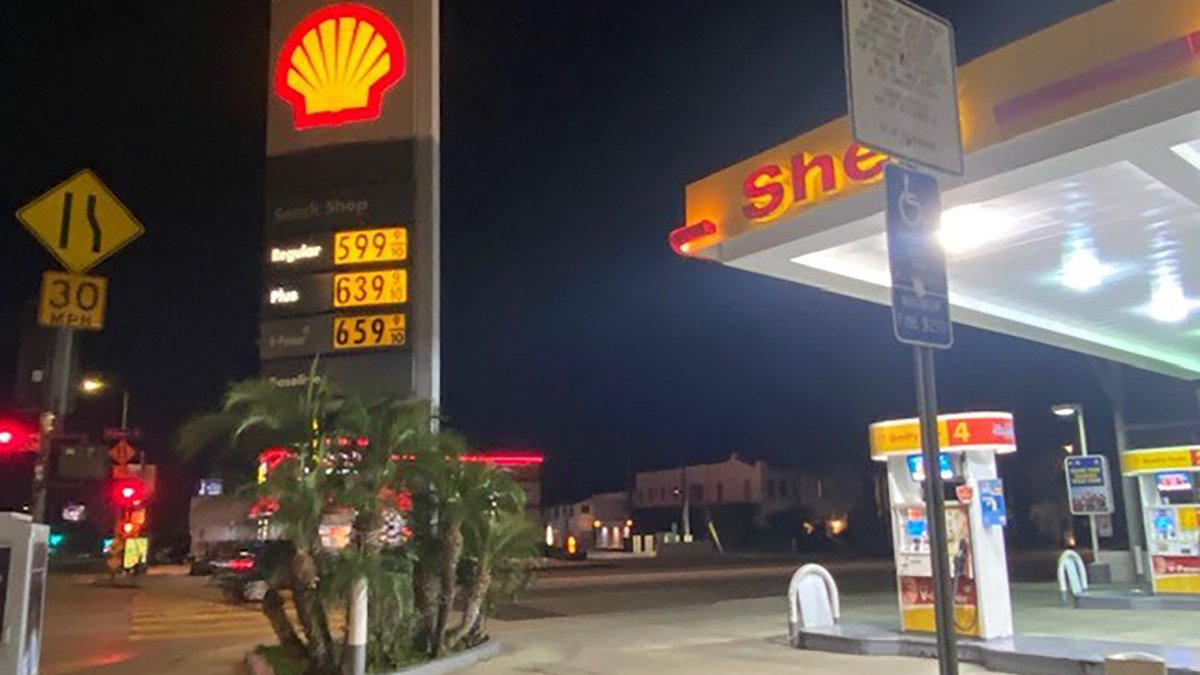Gas prices hit all-time highs this week in California, where prices per gallon have skyrocketed to nearly $ 6 in some areas.
The statewide average price for a gallon of regular has risen steadily over the past few weeks to $ 4.68. On Monday, at a station in Los Angeles’ Mid Wilshire neighborhood, a gallon of regular was $ 5.99. A gallon of super gasoline at the station was $ 6.59.
So what’s a thrifty driver to do with the road vacation season ahead? Here are some tips, including car maintenance tips and fuel-efficient driving habits, from AAA to help your car’s fuel economy.
Record gas prices are straining local deliveries. Vikki Vargas reports for the NBC4 News on Monday, November 15, 2021.
Start by checking your car’s tires
It’s something drivers should be doing on a regular basis anyway – after all, this is where the rubber meets the road. Beyond safety, properly inflated tires can help save fuel. A low tire increases the amount of fuel used. Look inside your car’s door panel to find the correct PSI. Modern passenger cars usually have a PSI in the 1930s.
Avoid the restaurant’s drive-thru line
Fast food drive-thru might seem quick and easy, but you burn fuel while you wait. If your car is stopped for more than 60 seconds, shut off the engine, AAA recommends. Many new cars come with an automatic start and stop system to do the job for you.
Not so fast. It’s a major drag
Again, safety should be a sufficient motivation for traveling at reasonable speeds. But it can also help save fuel. On highways, aerodynamic drag causes fuel economy to decline as speed exceeds 50 mph, according to the AAA.
Smooth and Steady wins the race to save fuel
Think smooth and steady at the brake light. Unless you’re on a Formula 1 starting grid, accelerating hard when the light turns green is a bad idea, especially for fuel economy. Smooth acceleration allows an automatic transmission to shift more quickly, reducing engine rpm and saving fuel. If you have a manual transmission, shift up a gear as soon as you can without “stalking” the engine.
Easy does it do when stationary
There is no need to rush and wait, which is why AAA recommends taking your foot off the accelerator early and letting the car gradually and safely drive at a slower speed until It’s time to brake for a stop sign or brake light.
Cruising helps prevent bruising at the pump
Using cruise control will help you maintain a constant speed instead of slowing down and accelerating steadily on the freeway. Do not use it on slippery roads.
Tidy up the roof rack
Try to limit your use of roof racks and other supports. On the highway, an empty bicycle, canoe or ski rack can affect fuel economy.
Cool it down without air conditioning
AAA says it’s best to minimize your air conditioning use. Open windows have less of an impact on fuel economy than the engine horsepower required to run the A / C compressor, even at highway speeds.
Stop tripping
Try to do as many errands as possible in one trip from home instead of making multiple trips. All that rolls is wasting gas.
Premium gasoline vs. regular gasoline
The above recommendations are all the things drivers can do on the road, but there is one thing the AAA recommends about the fuel pump. The agency says its research shows that unless your vehicle manufacturer specifically recommends a more expensive premium fuel, it offers no additional benefit over cheaper regular fuel. So, check your car’s manual or the inside of the gas tank cover.

